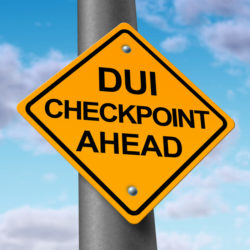If you need to file for an SR22 reinstatement, you should know it's a straightforward process, but it requires attention to detail. Start by contacting your insurance provider to confirm they can handle SR22 filings. After that, you'll need to purchase a compliant insurance policy. But that's just the beginning. Understanding the filing methods and required documents can make all the difference in your reinstatement journey. Let's explore the next steps.
Key Takeaways
- Contact your insurance provider to confirm they handle SR-22 filings and purchase a compliant auto insurance policy.
- Ensure your insurance policy meets your state's minimum liability coverage requirements to avoid complications.
- Choose the appropriate filing method, preferring electronic filing for faster processing, and consult your insurer for assistance.
- Submit all required documents for license reinstatement, including proof of SR-22 filing and completion certificates for any mandated courses.
- Maintain continuous SR-22 coverage by setting up automatic payments and regularly reviewing your policy to prevent lapses.
Contact Your Insurance Provider for SR22 Filing

When you need to file for an SR-22, the first step is reaching out to your insurance provider.
It's important to confirm that your insurer handles SR-22 filings, as not all companies offer this service due to the increased risk. Remember, an SR-22 isn't insurance itself; it's a document proving you have the minimum liability coverage required by your state. In California, obtaining an SR-22 certificate is essential for drivers who have had their licenses suspended. Verify you've purchased a standard auto insurance policy before proceeding. Be prepared for potential rate increases, as some insurers raise premiums considerably for SR-22 filings. If your insurance provider isn't licensed in your state, you may need to file directly with the DMV. Always compare options to find a provider that suits your needs. Additionally, be aware that filing an SR-22 is a crucial step toward license reinstatement.
Purchase a Compliant Insurance Policy
Purchasing a compliant insurance policy for your SR22 is essential to meet state requirements and maintain your driving privileges.
Each state has specific minimum liability coverage that you must adhere to, such as Florida's requirements of $10,000 for bodily injury and $10,000 for property damage.
To find the right policy, look for insurance providers that specialize in SR22 coverage, as not all companies offer this option.
Be aware that coverage typically needs to be maintained for three years, and any lapse can lead to penalties.
Additionally, consider obtaining a non-owner policy if you don't possess a vehicle.
Always verify your chosen policy complies with state mandates to avoid complications during the reinstatement process.
Choose the Appropriate Filing Method
Choosing the right filing method for your SR22 is essential, as it can greatly impact the speed and efficiency of your license reinstatement.
You have two primary options: electronic and paper filing. Electronic filing is typically faster and more efficient, as many states and insurance companies offer this service. However, some situations may necessitate traditional paper filing, which could lead to delays.
It's wise to consult your insurance provider, as they can assist you with the filing process and guarantee compliance with state-specific requirements. Additionally, look for providers that offer automated filing services, which can further streamline your reinstatement.
Submit Required Documents for License Reinstatement

To successfully reinstate your license, you'll need to submit several required documents that demonstrate compliance with SR-22 requirements.
First, provide proof of your SR-22 filing from your insurance provider. You'll also need completion certificates for any DUI education courses, along with court dispositions or other legal documents related to your case.
Provide proof of your SR-22 filing and completion certificates for DUI education courses, along with relevant legal documents.
Don't forget payment receipts for fines and fees, as well as a valid identification document and proof of residency.
Check your state's specific requirements, as they can vary. You can submit these documents electronically through state portals or by mailing them via certified mail to guarantee proof of delivery.
Keeping records of all submissions is essential for your reinstatement process.
Maintain Continuous SR22 Coverage to Avoid Penalties
Maintaining continuous SR22 coverage is essential not only for complying with state regulations but also for protecting your driving privileges.
If your policy lapses, your insurance provider will notify the state, which could lead to license suspension. To avoid this, set up automatic payments and regularly review your policy to guarantee it meets state requirements.
Communicate with your insurer about any changes that might affect your SR22 status. Remember, even non-owners might need an SR22 if their license is suspended.
Keeping thorough records of your coverage can help verify compliance. Failing to maintain coverage not only risks penalties but also complicates future reinstatement efforts.
Take proactive steps to safeguard your driving rights.
Conclusion
Steering through the SR22 reinstatement process can feel like walking a tightrope, but following these steps can help you regain your footing. By staying proactive and organized, you'll not only fulfill legal requirements but also pave the way for renewed freedom on the road. Imagine the relief of driving without the weight of penalties hanging over you. Embrace this journey with diligence; soon, you'll be back behind the wheel, ready to embrace new adventures.


